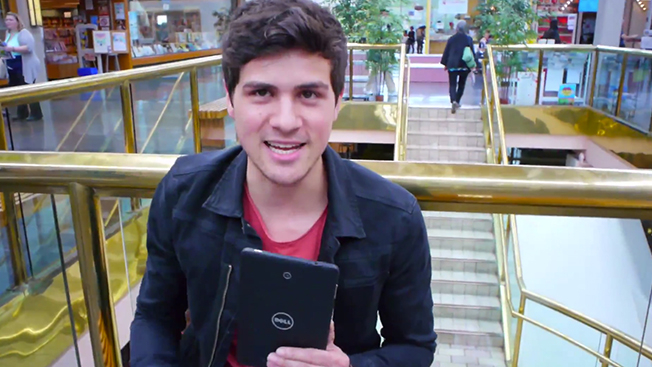Dell is working with digital media production company Defy Media to encourage teens and college kids to use its products when they head back to the classroom this fall.
Working with Defy's musical duo Kurt Hugo Schneider and Sam Tsui and pranksters SMOSH, the companies and online producers have come up with separate customized campaigns that will play on each YouTube influencers' strengths while still delivering the brand message. Schneider and Tsui's Dell-sponsored music video and behind-the-scenes video employ Dell tablets as an artistic tool.
Meanwhile, SMOSH is going on a roadtrip using suggestions from their fans and help from the Dell Venue 8 tablet.
"We wanted to keep their creativity and authenticity," Lorrie Schultz, Dell's director of North America consumer marketing, said. "We really brought their ideas to it and didn’t want to heavily change anything."
Defy Media differs from online multi-channel networks because they own the YouTube talent that works with them, paralleling the old Hollywood studio system that had stars under contract. Its stable of talent has a mostly millennial audience, which was perfect for Dell's youth-targeted campaign.
Schultz said Dell's goal was to develop a large digital following for its products, using the slogan "where learning means doing."
Other integrations include the company's 30-second selfie ad shown before PG-13 summer movies like Guardians of the Galaxy, Dawn of the Planet of the Apes and Step Up All, as well as in pre-roll via multiple ad networks. It's also utilizing Tumblr, Facebook, Twitter and BuzzFeed to spread its message.
While the idea of influencers becoming spokespeople for brands isn't a new idea, Defy Media evp and head of content and programming Barry Blumberg said using online talent known for specific shticks allows brands to tailor their message. It also means that Defy Media has to be picky with the marketers that it partners with, and he admits sometimes it doesn't work for certain products.
"It really depends on the brand and who their demographic is and who they're trying to reach and the tone of their branding. We try to match it up with the appropriate people we have in our fold," he said.








